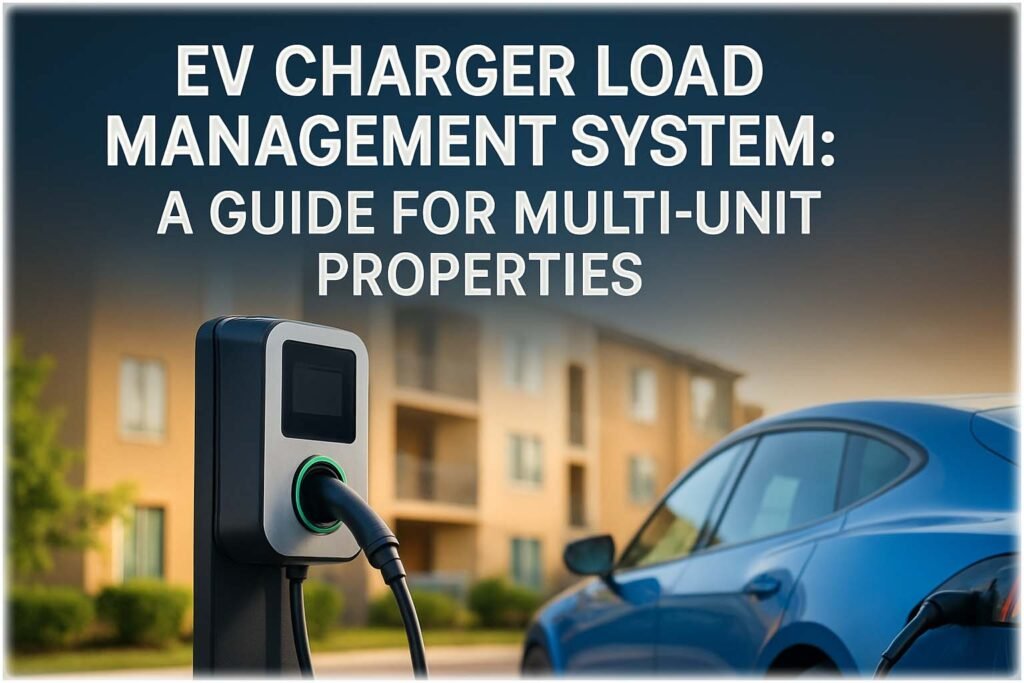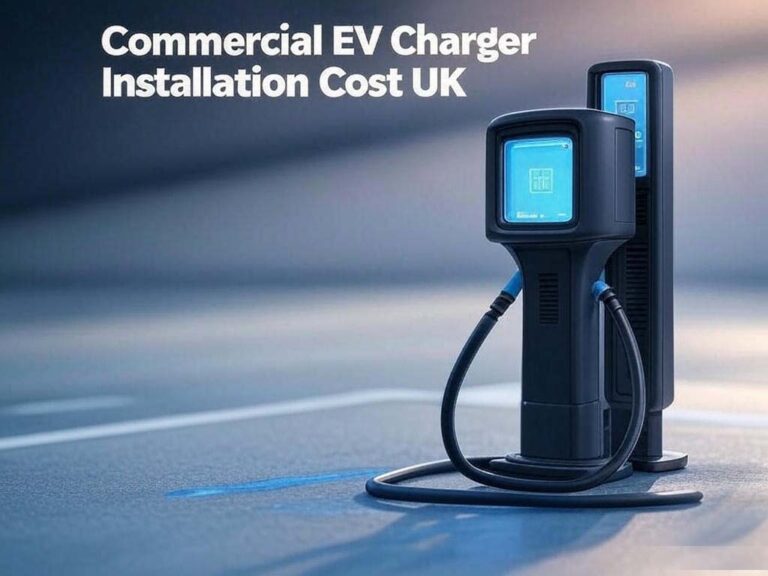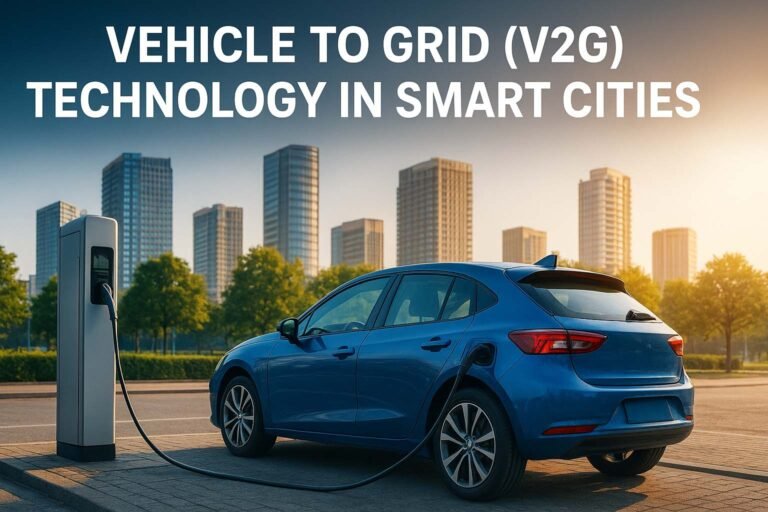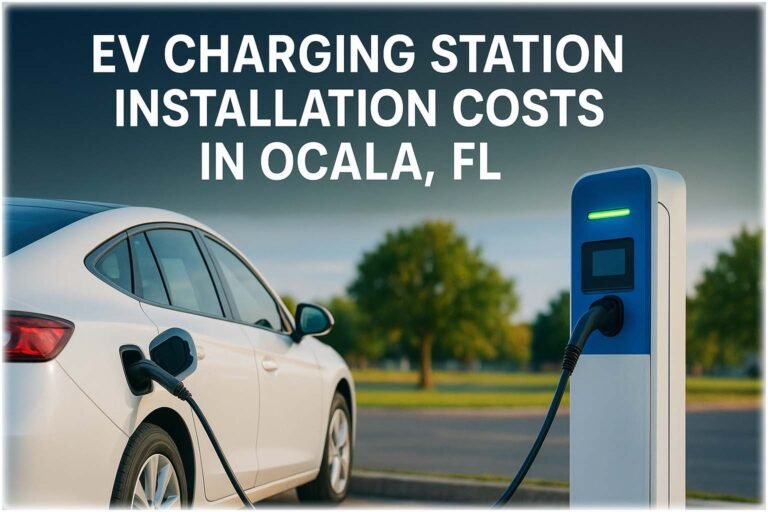EV Charger Load Management System: A Guide for Multi-Unit Properties
Electric vehicles (EVs) are transforming the way we think about transportation. With increasing adoption, the demand for efficient charging infrastructure has become a major concern—especially for apartments, condos, and multi-unit buildings. For property owners and facility managers, balancing electrical load while ensuring reliable charging access is now essential. This is where an EV Charger Load Management System plays a critical role.
An EV Charger Load Management System allows multiple charging stations to operate on a limited electrical capacity without overloading the main supply. It ensures that all EVs get the necessary charge while optimizing power distribution. This technology is not just about saving electricity—it’s about ensuring system safety, cost efficiency, and fair energy use among multiple residents or tenants.
Table of Contents
Table of Contents

In multi-unit buildings where space and power are shared, unmanaged charging can lead to circuit overloads or uneven power distribution. Therefore, adopting a smart load management system is no longer a luxury; it’s a necessity for sustainable EV adoption.
Key Takeaways
- EV Charger Load Management System helps distribute limited electrical power among multiple chargers efficiently.
- It prevents overload, improves safety, and reduces installation costs.
- Ideal for multi-unit residential buildings, commercial parking lots, and fleet operations.
- Smart load management can prioritize charging based on demand, time, or user settings.
- Future-ready systems integrate with renewable energy and building management platforms.
Understanding the EV Charger Load Management System
An EV Charger Load Management System (LMS) is a smart energy control solution that allocates available electrical capacity among several EV chargers. Instead of requiring an expensive grid upgrade, the LMS intelligently shares existing power.
Know more about Workplace EV Charging Station Incentives & Grants in the UK
For example, if a building has 100 kW total power available for EV charging and 10 vehicles are connected, the system can dynamically divide the load (10 kW each). If only five cars are plugged in, each might receive 20 kW for faster charging. This ensures all vehicles charge safely and efficiently without exceeding the building’s main supply capacity.
How It Works
The working principle of an EV Charger Load Management System is based on real-time monitoring and dynamic control. Smart meters and sensors continuously track power usage across the property. The management software then adjusts charging speeds to ensure the total draw remains within safe limits.
Below is a simplified representation of how load is distributed:
| Available Power (kW) | Number of EVs Connected | Power Allocated per EV (kW) | Total System Load (kW) |
|---|---|---|---|
| 100 | 2 | 50 | 100 |
| 100 | 5 | 20 | 100 |
| 100 | 10 | 10 | 100 |
| 100 | 20 | 5 | 100 |
This adaptive allocation makes EV charging more reliable and cost-effective, especially for shared environments.
Know more about Best EV Chargers for Hotels & Guest Accommodations [Commercial Grade]
Why Multi-Unit Properties Need an EV Charger Load Management System
Multi-unit residential buildings face unique challenges when adopting EV charging infrastructure. Limited electrical capacity, high installation costs, and shared utility billing make it difficult to offer equitable charging options to all residents.
An EV Charger Load Management System addresses these pain points. It enables property owners to install multiple chargers without upgrading the main transformer or service panel. Instead, the system maximizes existing capacity through smart distribution.
Here are some reasons why LMS is critical for multi-unit setups:
Avoid Electrical Overload:
Prevents tripping breakers or damaging the power system when many EVs charge simultaneously.
Reduce Infrastructure Costs:
Avoids expensive electrical upgrades, saving thousands in installation and utility expenses.
Ensure Fair Energy Distribution:
Every user receives adequate charging power without disrupting others’ usage.
Support for Future Expansion:
Scalable architecture allows more chargers to be added as EV ownership increases.
Improved Tenant Satisfaction:
Residents appreciate reliable and transparent access to EV charging, increasing property value.
Types of Load Management Systems for EV Charging
There are several ways to manage charging load depending on building design, user requirements, and available power. Below are the main types of EV Charger Load Management Systems used today:
1. Static Load Management
This method allocates fixed power levels to each charger. For instance, if the available load is 100 kW and there are 10 chargers, each gets 10 kW, regardless of how many are in use. While simple, this approach can be inefficient during off-peak usage because unused power cannot be reallocated dynamically.
2. Dynamic Load Management (DLM)
This is the most efficient and widely adopted method. DLM continuously monitors real-time load on the electrical network and adjusts EV charging power accordingly. If fewer EVs are plugged in, each charger automatically receives more power. When demand increases, the system redistributes the load to prevent overload.
3. Priority-Based Load Management
In certain applications, chargers can be configured to prioritize specific vehicles or users. For example, an emergency vehicle or fleet car might be given top priority, while residential users share the remaining load. This is especially useful in corporate or fleet charging scenarios.
| Type of Load Management | Control Type | Efficiency | Suitable For |
|---|---|---|---|
| Static Load Management | Fixed allocation | Moderate | Small buildings or low-demand systems |
| Dynamic Load Management | Real-time control | High | Large residential or commercial setups |
| Priority-Based Management | User-defined priorities | Very High | Fleet or mixed-use properties |
Know more about Best Outdoor Rated EV Chargers for Australian Weather
Benefits of EV Charger Load Management System
Implementing a Load Management System for EV Chargers provides both technical and financial advantages.
1. Cost Savings
By using existing electrical capacity, property owners can avoid service upgrades that often cost tens of thousands of dollars.
2. Enhanced Safety
Prevents overloading of electrical circuits, reducing the risk of equipment failure, fires, or outages.
3. Optimized Charging Efficiency
Every EV gets an efficient share of available power. Dynamic adjustments prevent bottlenecks and minimize downtime.
4. Scalability
The system can grow with increasing EV adoption. Adding new chargers is easy without major wiring changes.
5. Energy Transparency
Smart metering allows tenants or managers to track energy usage and billing accurately, ensuring fair cost allocation.
6. Grid Stability
By balancing load intelligently, LMS helps maintain grid stability and reduce peak demand charges from utilities.
Integration with Renewable Energy and Smart Grids
Modern EV Charger Load Management Systems are designed to integrate seamlessly with renewable energy sources like solar PV systems and battery storage. During sunny hours, the system can prioritize power from on-site solar panels to charge vehicles, reducing grid dependency and utility bills.
For instance, a solar-powered parking structure with a load management system can balance power between solar generation, grid import, and EV charging demand. The system ensures energy from renewables is used first before drawing additional power from the grid.
Such integration also supports demand response programs, where utilities incentivize consumers to reduce consumption during peak hours. LMS automatically adjusts charging rates to comply with these incentives, adding another layer of cost savings.
Load Management for Commercial and Fleet Operations
While multi-unit residential properties are the primary users, commercial buildings and EV fleets also benefit immensely from load management systems. In workplaces, the system can allocate charging based on shift timings or employee hierarchy.
Fleet operators, such as delivery or transportation companies, can use priority-based control to ensure critical vehicles are fully charged first. The rest can charge during off-peak hours when electricity is cheaper.
Know more about DIY EV Charger Installation: A Step-by-Step Safety Guide
Key Components of an EV Charger Load Management System
A typical LMS setup consists of both hardware and software components working together.
| Component | Function |
|---|---|
| Smart EV Chargers | Communicate with the management system to control power output. |
| Energy Meter / CT Sensors | Measure real-time power flow across the system. |
| Load Management Controller | Central processor that monitors and adjusts charging levels. |
| Cloud or Local Server | Stores data, manages analytics, and handles user access. |
| User Interface (App or Dashboard) | Enables users or administrators to monitor and control charging sessions. |
Together, these components ensure that EV charging remains smooth, safe, and efficient across multiple users.
Implementation Strategy for Multi-Unit Properties
To successfully deploy an EV Charger Load Management System, property managers should follow a strategic approach.
- Assess Electrical Capacity:
Conduct an energy audit to determine available capacity and peak load limits. - Plan Charger Locations:
Choose parking spots that minimize cable length and ensure convenience for users. - Select the Right System Type:
Depending on the number of chargers and usage patterns, opt for static, dynamic, or hybrid management. - Install Smart Meters and Controllers:
Enable real-time monitoring for accurate load distribution. - Educate Residents or Users:
Communicate system benefits and ensure transparency in usage and billing. - Monitor and Optimize:
Use collected data to fine-tune performance and expand capacity as needed.
Challenges and Future of Load Management Systems
While the benefits are clear, implementing an EV Charger Load Management System can present some challenges. The initial setup requires technical expertise and coordination between electrical engineers, property managers, and EV charger vendors.
Data privacy, interoperability between different charger brands, and real-time communication reliability are also concerns that developers continue to address.
However, the future looks bright. With growing EV adoption, innovations like AI-driven load prediction, blockchain-based billing, and vehicle-to-grid (V2G) technology will make these systems smarter and more autonomous. Soon, LMS will become a standard feature in every residential and commercial development.
Know more about Wallbox EV Charger: Cost of Unit & Installation Guide 2025
Conclusion
An EV Charger Load Management System is the backbone of sustainable EV infrastructure in multi-unit properties. It ensures efficient use of limited electrical capacity, reduces operational costs, and provides fair access to all EV owners.
By adopting smart load management today, property owners can future-proof their buildings for the electric revolution, reduce maintenance risks, and enhance tenant satisfaction.
As cities evolve toward greener transportation, the role of EV load management will only grow stronger—bridging the gap between energy efficiency, affordability, and environmental responsibility.
Follow Us on Social:
Subscribe our Newsletter on Electrical Insights to get the latest updates in Electrical Engineering.
#EVChargerLoadManagementSystem, #ElectricVehicleCharging, #EVChargingSolutions, #LoadManagementSystem, #SmartEVCharging, #EVInfrastructure, #SustainableMobility, #EVChargingTechnology, #MultiUnitProperties, #EVChargingManagement, #EnergyEfficiency, #EVChargingNetwork, #ElectricCarCharging, #SmartGridIntegration, #EVChargerInstallation





